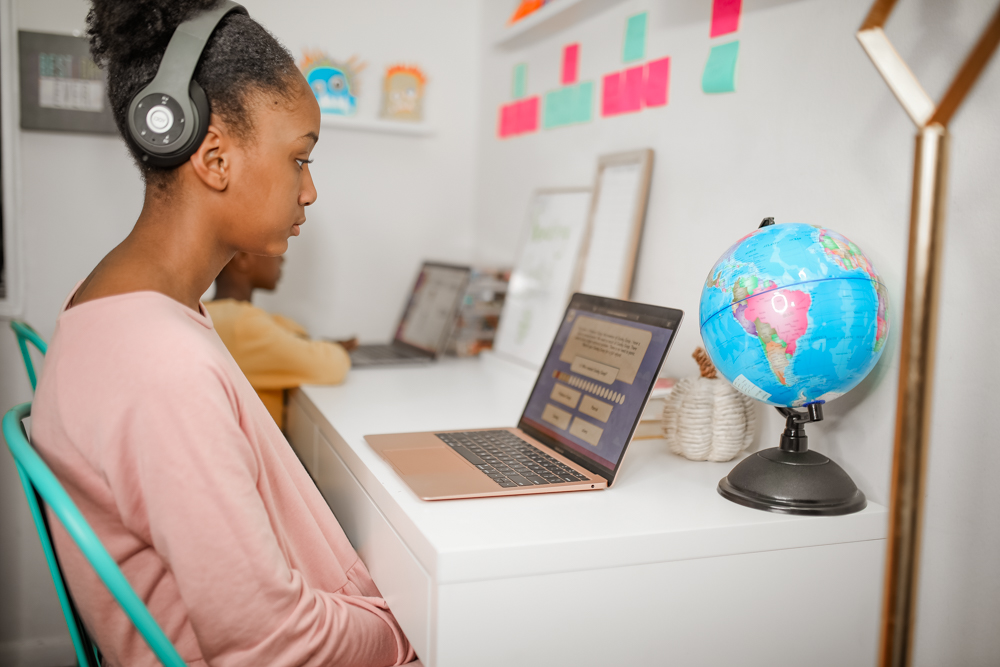
As many of you know, I started homeschooling my children back in September, so we’re still new. We just finished our first quarter, and I have to say it’s been a good experience for us so far. Of course, it was challenging since I have three children of different age groups. I did a lot of research before we started homeschooling, but I’m learning what works best for us as we go along. I initially started to create a homeschool portfolio in a big binder for recordkeeping. Still, I soon realized it wasn’t a good fit for me, especially since I need to submit our records digitally. S o I’ve switched to a digital homeschool portfolio. If you’re thinking about doing the same, I wanted to share a few simple tips for creating a digital portfolio that I’ve found helpful so far.

Choose a platform to save your digital homeschool portfolio.
The platform will depend on what’s best for you and what you’re comfortable using. It can be anything from a working Google document, spreadsheet, or even a full WordPress blog like this one. You can also utilize apps like Childfolio to create and manage your child’s digital homeschool portfolio from your smartphone. I love this app because it can be used to log field trips, activities, and any size creative projects plus it’s inexpensive.
Take photos of everything you want to add to your child’s digital portfolio.

I think most of us millennial moms naturally take lots of photos, so it’s easy for us to get into the groove of taking pictures of everything we need as a record. While I try not to throw out physical copies of the kid’s schoolwork, I take photos for their digital homeschool portfolio. This is also a great way to reduce clutter if you have little storage space like myself.
Make regular notes of your child’s progress and struggles.
This is the best way to track your child’s progression to take note of subject areas they struggle with and seek extra help. It’s also good to make these notes to determine if you need to change your teaching style, the curriculum, or find other supplemental resources to help your child.
Use video to capture your child’s progress.
Don’t be afraid to use all types of media in your digital homeschool portfolio. Videos are great as you can capture your child reading out loud, showing off an exciting science project, and their expression
when they work out a challenging math problem or field trip experience. These videos are fantastic for our memories as well as the digital homeschool portfolio.
Download online transcripts for virtual classes and curriculum.
If your children also take online classes, you can download that information to add to your digital portfolio. As I shared in this post, we use Time4Learning and Outschool classes for my children. I can download my children’s transcripts from both platforms and add them to their portfolio, plus the certificates of completion they’ve earned from Code Advantage.
Backup your digital homeschool portfolio.
As we all know, technology isn’t always dependable so be sure to backup your digital homeschool portfolio. My preference is cloud storage like Dropbox, Google Drive, Apple iCloud, etc. because it’s easy to access them from anywhere and any device. You can also use an external hard drive in addition to saving it on your computer.
I hope you find these tips helpful in putting together a digital homeschool portfolio for your children. As our homeschool journey continues, I’m going to share more of our experience, and what’s works best for us be sure to follow me over on Instagram where I share a daily look at our homeschool experience in my stories.
